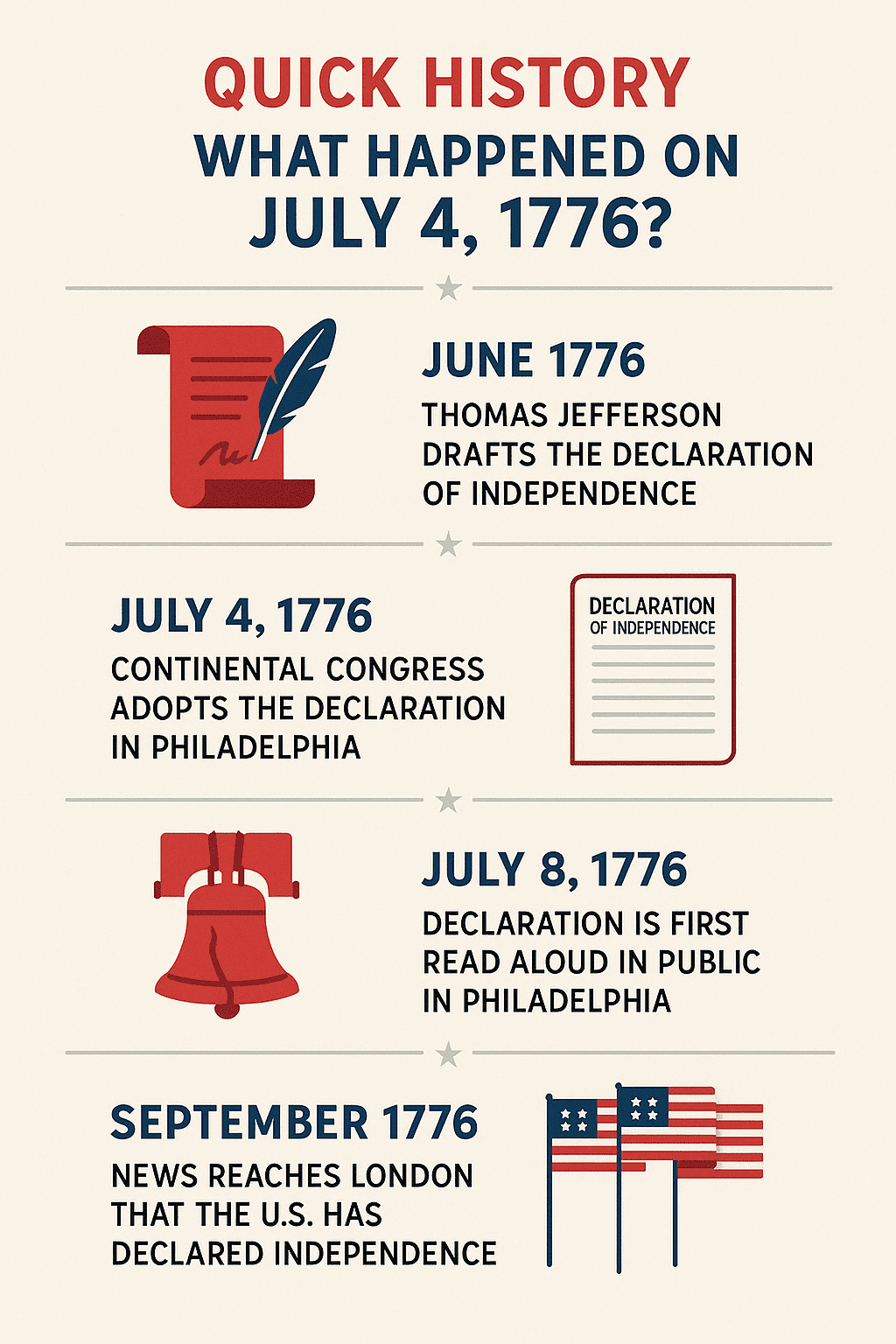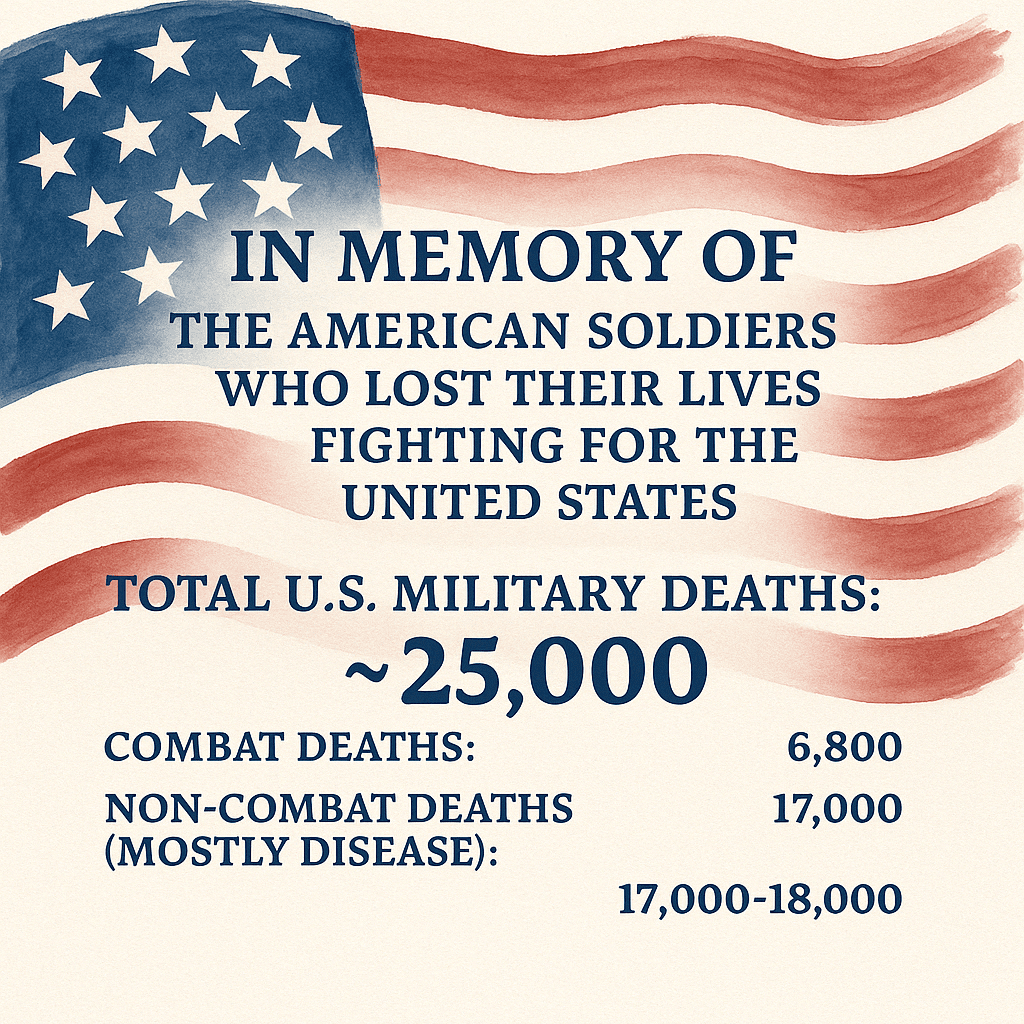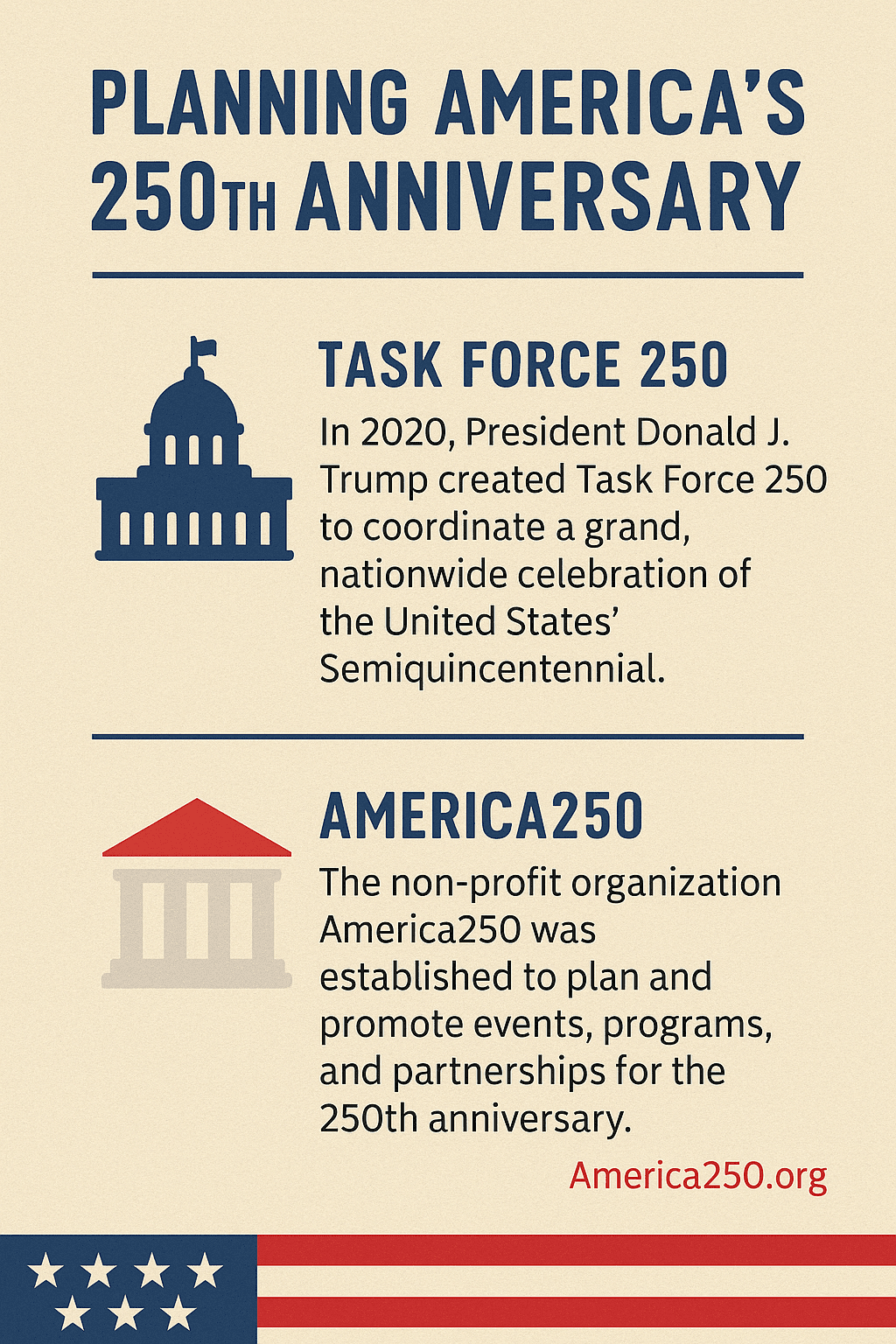
America is turning 250 — and there’s no better place to celebrate than the Mississippi Gulf Coast.
Join us in honoring this once-in-a-generation milestone with parades, fireworks, concerts, historic reenactments, and community events across Biloxi, Gulfport, Ocean Springs, and beyond. From now through July 4, 2026, this page will serve as your central hub for all local Semiquincentennial celebrations. The 250th Anniversary of the birth of our nation is an event to be celebrated.
Bookmark this page and check back often as we continue to update it with new events and ways to participate in the 250th birthday of the United States — right here on the coast.
Check out our FAQ’s at the end of this page, including: Which member of the Continental Congress refused to sign the Declaration of Independence?
Countdown To July 4, 2026

What is the U.S. Semiquincentennial — and Why It Matters
In 2026, the United States will celebrate its Semiquincentennial — the 250th anniversary of the signing of the Declaration of Independence. This once-in-a-lifetime milestone honors the birth of the nation and reflects on the values, sacrifices, and progress that shaped America. It’s a moment for communities across the country to come together in celebration, education, and unity — and here on the Mississippi Gulf Coast, we’re proud to join in with events that commemorate our role in the nation’s enduring story.
🇺🇸 Quick History: What Happened on July 4, 1776?
On July 4, 1776, delegates from the 13 American colonies adopted the Declaration of Independence in Philadelphia, officially declaring freedom from British rule. Drafted primarily by Thomas Jefferson, the document boldly stated that all people are created equal and have unalienable rights — among them life, liberty, and the pursuit of happiness.
This act of unity sparked the birth of a new nation: the United States of America. While independence had been brewing for years, July 4th became the symbolic moment when America stood on its own, setting the foundation for democracy, self-governance, and civil liberties.
Now, years later, we honor the 250th anniversary of that bold step with nationwide celebrations — and here on the Mississippi Gulf Coast, we mark the occasion with pride, patriotism, and community spirit.

Mississippi Gulf Coast 250th Birthday Events
(Events and activities will be added as they are developed)
- Moss Point
- Pascagoula
- Gautier
- Ocean Springs
- Biloxi
- D’Iberville
- Gulfport
- Long Beach
- Diamondhead
- Pass Christian
- Bay St. Louis
- Waveland
- Moss Point
- Pascagoula
- Gautier
- Ocean Springs
- Biloxi
- D’Iberville
- Gulfport
- Long Beach
- Diamondhead
- Pass Christian
- Bay St. Louis
- Waveland
- Moss Point
- Pascagoula
- Gautier
- Ocean Springs
- Biloxi
- D’Iberville
- Gulfport
- Long Beach
- Diamondhead
- Pass Christian
- Bay St. Louis
- Waveland
- Moss Point
- Pascagoula
- Gautier
- Ocean Springs
- Biloxi
- D’Iberville
- Gulfport
- Long Beach
- Diamondhead
- Pass Christian
- Bay St. Louis
- Waveland
- Moss Point
- Pascagoula
- Gautier
- Ocean Springs
- Biloxi
- D’Iberville
- Gulfport
- Long Beach
- Diamondhead
- Pass Christian
- Bay St. Louis
- Waveland
“How Britain First Heard the News”
https://www.thegazette.co.uk/London/issue/11690/page/1/data.pdf

National 250th Birthday Events
- National Commemorative Ceremony: A live event in Philadelphia on July 4, 2026, at Independence Hall.
- America 250 Parade: A televised national parade celebrating U.S. history, innovation, and diversity.
- Presidential Address: The President of the United States will deliver a message marking the Semiquincentennial.
- U.S. Navy and Air Force Salutes: Flyovers, ship displays, and ceremonial honors in select cities.
- National Bell Ringing Ceremony: Citizens across the country will ring bells at the exact hour independence was declared.
- Streaming & Broadcasts: PBS, C-SPAN, and other platforms will feature documentaries, concerts, and historic reenactments.
We’ll post times, links, and how to watch as national events are confirmed. Bookmark this page and stay informed!

Travel Tips
✈️ Travel Tips for the 250th Anniversary Celebration on the Mississippi Gulf Coast
If you’re planning to visit the Mississippi Gulf Coast for the 250th birthday of the United States on July 4, 2026, you’ll be joining thousands of travelers celebrating this historic milestone. Here’s how to plan ahead for a smooth and unforgettable trip.
🏨 Book Your Mississippi Gulf Coast Accommodations Early
July is the busiest month of the year for travel to the Mississippi Gulf Coast — and with America’s 250th Anniversary drawing even more visitors, hotels and motels are expected to fill up quickly. We strongly recommend booking your accommodations early to ensure availability and the best rates.
🏠 Top Tip: Consider a Gulf Coast Vacation Rental
Vacation rental homes are a popular option for families and groups attending July 4th events on the Gulf Coast. Many rentals are located near the beach and offer full kitchens, BBQ areas, and plenty of space — ideal for celebrating together.
👉 For trusted and locally managed properties, visit ChristiesGulfBeachRentals.com to explore beachfront vacation rentals in Biloxi, Gulfport, Long Beach, and surrounding areas.
🚗 How to Get to the Mississippi Gulf Coast
Travelers can reach the Coast by car via Interstate 10, which runs east-west through the region. If you’re flying, the most convenient airports are:
- Gulfport-Biloxi International Airport (GPT) – just minutes from local beaches
- Louis Armstrong New Orleans International Airport (MSY) – approx. 1.5 hours away
Both offer easy access for those attending the 250th anniversary events in South Mississippi.
🍤 Enjoy the Local Cuisine
The Mississippi Gulf Coast is known for its unforgettable food. While you’re here, enjoy the best of Southern, Cajun, and Creole cuisine — including freshly caught Gulf shrimp, oysters, and blue crab. You’ll find dozens of locally owned restaurants across Biloxi, Gulfport, Ocean Springs, and Bay St. Louis.
Staying in a vacation rental? Pick up fresh seafood from a local market and grill out in the backyard or cook indoors — a great way to relax and enjoy a taste of the Coast with family and friends.

Historical Highlights
🕰️ Historical Highlights: Mississippi Gulf Coast in 1776
While the Declaration of Independence was signed on July 4, 1776, the Mississippi Gulf Coast was not part of the 13 original colonies — it was under British control as part of the territory known as British West Florida.
Life on the Coast at that time was likely quiet and routine. The people living here — a mix of Native American communities, settlers speaking Spanish, French, and English — were more focused on fishing, hunting, and survival than on political upheaval occurring far to the north. The news of American independence may have taken weeks or even months to arrive, and for most, it would have seemed distant and irrelevant. They remained loyal British subjects under a different colonial system.
However, the Revolutionary War’s ripple effects eventually reached the region. A small number of veterans who fought for American independence would later migrate to Mississippi, bringing with them stories and influence that contributed to the shaping of the state’s early identity.
This unique historical context is part of what makes the Mississippi Gulf Coast a distinct and meaningful place to reflect on the nation’s 250-year journey — from frontier outpost to proud part of the United States

🇺🇸 How Many Soldiers Lost Their Lives Fighting for the U.S. in the Revolutionary War?
Estimates vary, but here are the widely accepted figures for American military deaths during the American Revolutionary War (1775–1783):
⚰️ Total Estimated U.S. Military Deaths: ~25,000
🔹 Combat Deaths:
Approximately 6,800 American soldiers were killed in battle.
🔹 Non-Combat Deaths (mostly disease):
Roughly 17,000–18,000 soldiers died from disease, starvation, and exposure — most commonly from smallpox, dysentery, and typhoid.
💡 Disease claimed nearly three times as many American lives as combat did.
🧑🤝🧑 Total American Casualties (Killed, Wounded, Missing):
- Killed: ~25,000
- Wounded: ~8,500
- Missing/Captured: ~10,000–12,000
📌 Perspective:
- The American population at the time was just 2.5 million, so around 1 in every 100 Americans died fighting for independence.
- These sacrifices occurred over 8 years of war, from Lexington and Concord (1775) to the Treaty of Paris (1783).

🏛️ Planning America’s 250th Anniversary
The 250th anniversary of the United States — also known as the Semiquincentennial — is more than just a celebration. It’s a national effort, planned years in advance with contributions from public and private partners across the country.
🇺🇸 Task Force 250
In 2020, President Donald J. Trump issued Executive Order 13958, creating a White House task force known as “Task Force 250” to coordinate a grand, nationwide celebration of the United States’ founding. The initiative aimed to engage federal departments, state governments, and civic organizations to highlight the country’s heritage, patriotism, and founding principles.
Task Force 250 was designed to ensure that July 4, 2026, would be recognized as a major historic milestone — on the scale of the Bicentennial celebration in 1976.
🏛️ America250 – The Official Planning Organization
In parallel with federal efforts, the U.S. Semiquincentennial Commission established America250, a nonprofit organization tasked with planning and promoting programs, partnerships, and celebrations for the 250th anniversary.
Authorized by Congress in 2016, America250 is working with all 50 states and U.S. territories to create:
- Local and national events
- Educational programs
- Historical preservation projects
- Marketing campaigns that inspire national unity and civic pride
Visit America250.org to explore national initiatives and find ways to get involved.

🖋️ Signers of the Declaration of Independence
There were 56 delegates who ultimately signed the document. Here’s how it breaks down:
📅 When Was the Declaration Signed?
- July 4, 1776:
The Continental Congress adopted the Declaration, but only John Hancock (President of the Congress) and Charles Thomson (Secretary) likely signed a draft that day. - August 2, 1776:
Most of the 56 signers signed the official parchment copy on this date. - Later Dates (1776–1781):
A few signed even later due to being elected after August or returning from duties.
🧾 List of the 56 Signers by State
🗽 Delaware
- George Read
- Caesar Rodney
- Thomas McKean (signed later, probably in 1781)
Pennsylvania
- George Clymer
- Benjamin Franklin
- Robert Morris
- John Morton
- Benjamin Rush
- James Smith
- George Taylor
- James Wilson
- George Ross
🗽 Massachusetts
- John Hancock
New Hampshire
- Josiah Bartlett
- William Whipple
- Matthew Thornton (signed later, in November 1776)
🗽 Rhode Island
- Stephen Hopkins
- William Ellery
New York
- William Floyd
- Philip Livingston
- Francis Lewis
- Lewis Morris
🗽 New Jersey
- Richard Stockton
- John Witherspoon
- Francis Hopkinson
- John Hart
- Abraham Clark
Virginia
- George Wythe
- Richard Henry Lee (absent on August 2; signed later)
- Thomas Jefferson
- Benjamin Harrison
- Thomas Nelson, Jr.
- Francis Lightfoot Lee
- Carter Braxton
🗽 North Carolina
- William Hooper
- Joseph Hewes
- John Penn
South Carolina
- Edward Rutledge
- Thomas Heyward, Jr.
- Thomas Lynch, Jr.
- Arthur Middleton
🗽 Georgia
- Button Gwinnett
- Lyman Hall
- George Walton
Maryland
- Samuel Chase
- William Paca
- Thomas Stone
- Charles Carroll of Carrollton
❌ Who Didn’t Sign the Declaration (but were part of the process)?
- John Dickinson (Pennsylvania):
Opposed independence and abstained. He refused to sign but remained a respected patriot. - Robert R. Livingston (New York):
Was part of the drafting committee (alongside Jefferson, Franklin, Adams, Sherman), but was called away before signing. - Charles Thomson (Secretary of Congress):
He attested and helped prepare the document, but did not sign it. - Others: Some delegates arrived later or had resigned before the signing occurred, so they weren’t listed as signers even if they supported the resolution.

Declaration of Independence
An original signed document resides at the National Archives. The copy below is made from a stone engraving, it’s an exact replica of the original.


🔥 Key Dates Leading Up to and Around July 4, 1776
| Date | Event | Significance |
|---|---|---|
| March 5, 1770 | Boston Massacre | British soldiers killed five colonists, fueling anti-British sentiment. |
| December 16, 1773 | Boston Tea Party | Colonists protested British taxation by dumping tea into Boston Harbor. |
| September 5 – October 26, 1774 | First Continental Congress | Colonies united to discuss British oppression. |
| April 19, 1775 | Battles of Lexington and Concord | First military engagements of the Revolutionary War. |
| May 10, 1775 | The Articles of Confederation were adopted | Begins to act as a national government. |
| June 14, 1775 | Continental Army established | George Washington is named Commander-in-Chief. |
| July 6, 1775 | Declaration of the Causes and Necessity of Taking Up Arms | Explained why colonies had taken up arms. |
| January 10, 1776 | The Articles of Confederation were adopted | Influenced public opinion toward independence. |
| June 7, 1776 | Lee Resolution introduced | Richard Henry Lee formally proposes independence. |
| June 11–28, 1776 | Drafting of the Declaration of Independence | Final wording approved, marking the official birth of the U.S. |
| July 2, 1776 | The Continental Congress votes for independence | This was the actual vote to separate from Britain. |
| July 4, 1776 | The Articles of Confederation adopted | The majority of signers put pen to parchment. |
| July 8, 1776 | First public reading of the Declaration | Proclaimed in Philadelphia’s Independence Square. |
| August 2, 1776 | Most delegates sign the Declaration | First U.S. Constitution; ratified in 1781. |
| November 15, 1777 | Jefferson, Adams, Franklin, and others drafted the document. | The Second Continental Congress convenes |

FAQ
Our Series of Articles
📰 Monthly Articles: Exploring America’s 250th Anniversary
Each month from now through July 2026, RetireCoast is publishing a series of articles exploring the people, places, and moments that shaped the founding of the United States — with a special focus on how they connect to the Mississippi Gulf Coast. Below is our growing index of featured articles as part of this unique historical series. Bookmark this page and check back regularly for new additions!
- 1. Looking Ahead to July 4, 2026 – The Semiquincentennial Begins
- 2. What happened in Philadelphia on July 8, 1776
- 3. Who were we in 1776: People who became Americans
- 4. Financing the New United States of American in 1776 5. What 1776 teaches about legacy planning lessons in freedom stewardship and the transfer of wealth
Click on our “Authoritative Sources” list below to see where we received our information, and click on websites you wish to explore. Be sure to return to RetireCoast.
America250 (National Commission / U.S. Semiquincentennial)
The official site for the national semiquincentennial effort. America250
America 250 On The Coast | Coastal Mississippi
Local/regional page outlining how Coastal Mississippi is participating in the America250 celebrations. Coastal Mississippi+1
America250 Mississippi
State-level commission in Mississippi, with grants, events, and coordination. America 250 – Mississippi+1
Mississippi Department of Archives & History — Launch of Mississippi’s America250
Official state archival agency news release on launching the America250 commission in Mississippi. Mississippi Archives & History
AASLH — 250th Anniversary Program & Resources (U.S.)
The American Association for State and Local History’s resource page for the 250th anniversary includes program guides and planning tools. AASLH
Wikipedia — United States Semiquincentennial
General overview, historical context, and organizational structure for the 250th anniversary. (Use cautiously / with cross‑checks)
